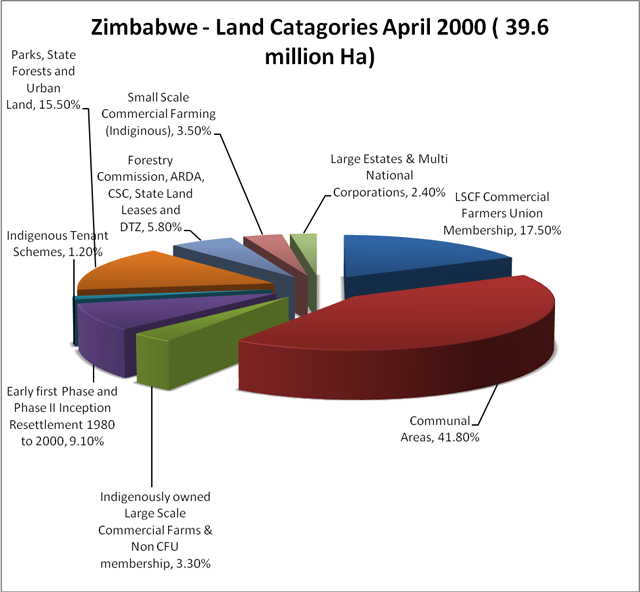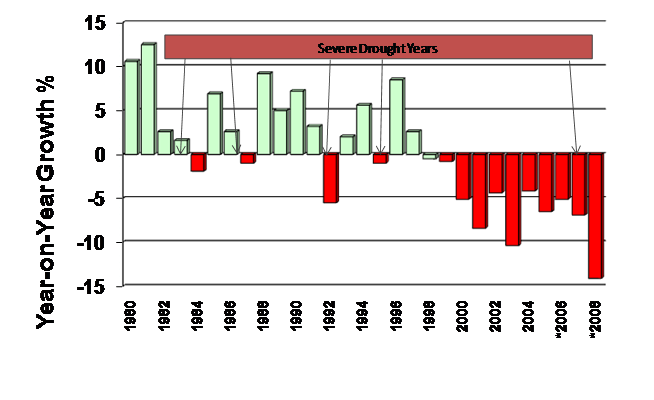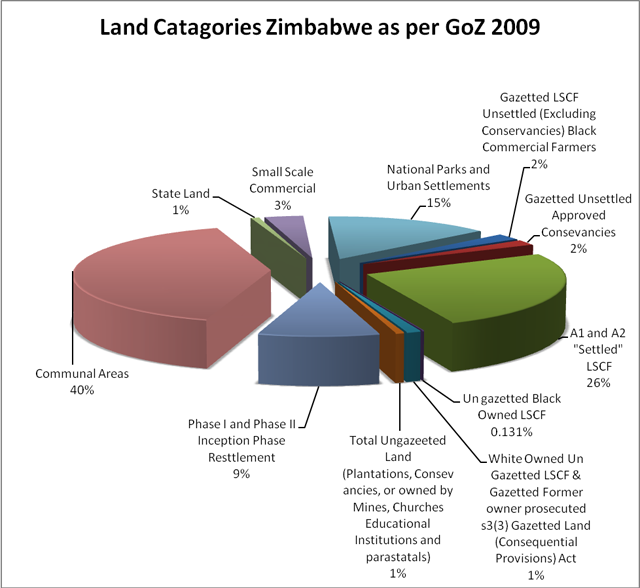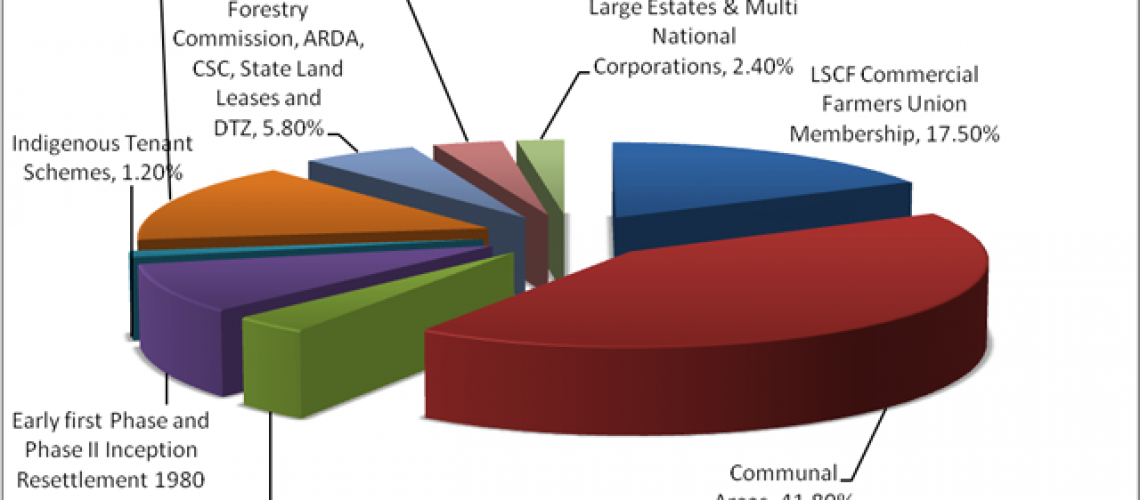In 2000, the total number of Large Scale Commercial Farmers was approximately 4500. Land divisions were as follows:

Source Commercial Farmers’ Union
Also there were approximately 350 000 permanent employees and about 250 000 casual workers who together with their families amounted to about 1.8 million people who lived and sourced their livelihoods off commercial farms. Many farm workers and their families were descended from Malawian and Mozambique migrant labour brought to this country in the middle of the 20th century because of a labour shortage. They therefore have no traditional home in a communal area.
Since 1992, The Government of Zimbabwe had as its target the acquisition 8.3 million hectares from the commercial farming area and redistribution to landless blacks under
· the so-called model A1 scheme where small-scale farmers would receive plots not exceeding 6 hectares; and
· the model A2 scheme where people of resources would be resettled on a cost recovery basis in order to indigenise the economy.
By 2000, Government had acquired some 3.4 million hectares. Donor support for a continuation of Phase II of the Land Reform Programme had been obtained and agreed parameters for a reasonable programme of land reform, which did not sacrifice agricultural production, were agreed on at a donor conference held in 1998.
However, following the rejection in a referendum of a draft Constitution, which sought to declare unilaterally Britain as solely responsible for paying for Land Reform, invasions of commercial farms began. Government propaganda portrayed land invasions as a spontaneous uprising by landless blacks in protest. The reality was that land invasions were sponsored and organised by state agents.
A new opposition party had been formed and was gaining momentum and had been integral in the referendum defeat. With a Parliamentary election in a few months and a Presidential election in two years thereafter Government needed to act quickly to consolidate its political control. The Constitution was quickly amended ahead of the Parliamentary election and the Rural Police were instructed not to intervene in so-called political matters. This effectively gave war veterans and other supporters, who were leading land invasions impunity to perpetrate political motivated crimes during the land invasions. Farm workers were to face the brunt of this assault perhaps for their perceived support of the opposition party. Further Court rulings in favour of commercial farmers were consistently ignored. Human rights abuses and forced attendance to political meetings were the order of the day.
Over the next 10 years, the law would be gradually amended to allow Government to easily acquire land culminating in a constitutional amendment, which effectively Nationalised all Large Scale Commercial farm land. Political freedoms, basic human rights would be drastically limited, and the judiciary would be purged of judges who did not accord with ruling party interests. To date approximately 16 High Court and Supreme Court judges have been given farms under the land reform programme. These same judges preside over litigation involving commercial farmers attempting to enforce their rights.
The period would also result in a marked decrease in overall agricultural production, a shrinking GDP and total economic meltdown.

Source: Robertson Economic Services
Government claims that the causes of the country’s woes are droughts and sanctions are a fallacy.
In November 2008, the illegitimacy and illegality was recognised by 5 judges from the region in the SADC Tribunal. Government has consistently ignored the ruling and treated it with outrageous contempt.
Government claims of giving land and empowering the black majority are simply not true. The truth is that land is lent to people in a system of political patronage. The continued use and occupation of the land is dependent on their political affiliation and loyalty. There is no genuine empowerment or farmer autonomy there is no security of tenure and there is no collateral value attached to the land. It is a dead asset, which cannot drive its own development.
The majority of land has been given to senior politicians, members of the security forces, Government employees and other civil servants. Less than 1% of the 1.8 million commercial farm workers have received land under the land reform programme.
Commercial Farmers on numerous occasions have made efforts to participate in solving the Land question. One particularly good example is the Zimbabwe Joint Resettlement Initiative (ZIJIRI). This initiative involved an offer of close on 3 million hectares of land to Government on an uncontested basis.
Government has stubbornly spurned all these initiatives and has instead continued the chaotic reform programme ignoring all principles of international law and good governance. Bilateral Protection and Promotion of Investment Agreements (BIPPAs) are violated at will, and Government policy continues to be that “no foreigner can own land in Zimbabwe”. The majority of CFU members are Zimbabwean citizens and their rights are still ignored.
Today CFU members control s less than 1% of Zimbabwe’s land. CFU statistics show that its members control less than 0.3% of Zimbabwe’s land. There are less than 300 productive commercial farmers remaining on the land all but a handful face prosecution for continuing to use their farms. To date 19 farmers and 29 farmer workers have been prosecuted and convicted for allegedly being on farms without lawful authority. Some farmers have managed to lease land on indigenously owned commercial farms. Many of the farmers evicted over the last 10 years have moved elsewhere in the region to ply their trade.

Source: Ministry of Lands & Rural Resettlement: Memorandum to Cabinet by the Minister of Lands and Rural Resettlement Hon. H. M. Murerwa (M.P.) on the Update on Land Reform & Resettlement Programme – 27th of August, 2009

